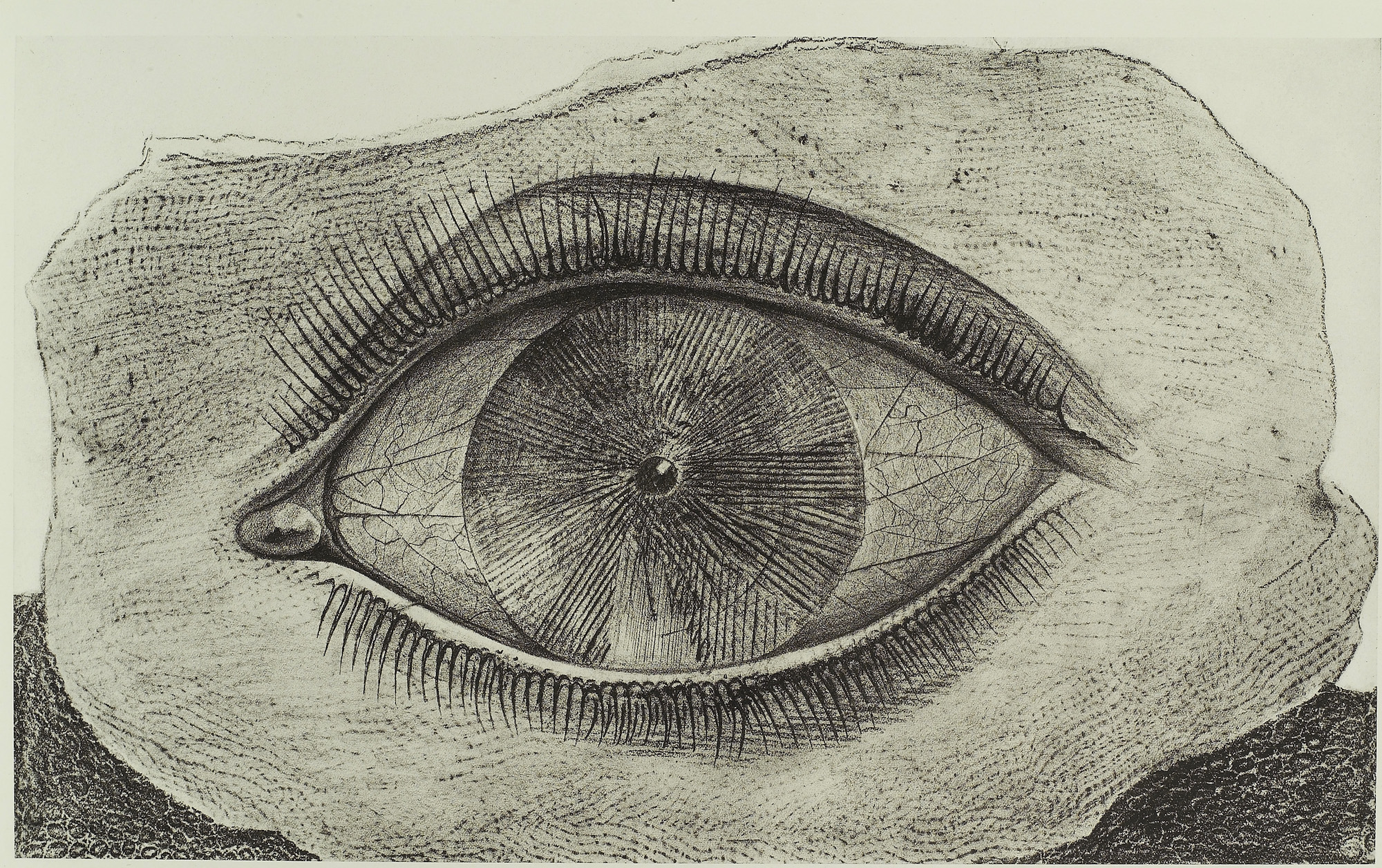
Max Ernst (German, 18911976), Frottage, 1925 Art impressionniste, Les arts, Dessin noir et blanc
Max Ernst. A key member of first Dada and then Surrealism in Europe in the 1910s and 1920s, Max Ernst used a variety of mediums—painting, collage, printmaking, sculpture, and various unconventional drawing methods—to give visual form to both personal memory and collective myth. By combining illusionistic technique with a cut-and-paste logic.

Fig. 3. Max Ernst. Wheel of Light. Collotype, after frottage, printed in black. 10 1/2 x 17
Frottage is an artistic technique first adopted by the Surrealist artist Max Ernst in the second half of the 1920s. The frottage creative process is based on the principle of rubbing a sheet of paper or a canvas over a rough and textured surface, using a pencil, a crayon or other drawing tools. Frottage is one of the techniques invented by the.

max ernst, frottage Max Ernst, Famous Artists, Great Artists, Collages, Dada Movement, Automatic
Abstract: When André Breton released his Manifesto of Surrealism in 1924, he established the pursuit of psychic automatism as Surrealism's principle objective, and a debate concerning the legitimacy or possibility of Surrealist visual art ensued. In response to this skepticism, Max Ernst embraced automatism and developed a new technique, which.

ernst, max frottage drawings Art impressionniste, Les arts, Art
Max Ernst: Frottagen u. Collagen; März-April 1972, Krefelder Kunstverein | WorldCat.org

Imagen relacionada (con imágenes) Max ernst, Abstracto, Arte
Grattage. In 1927, Max Ernst developed the grattage as an application of the frottage technique in painting. Richly textured, relief-like materials such as wood, wire mesh, pieces of broken glass, and cord were placed under a canvas primed with numerous layers of paint. The individual layers of paint were scraped from the canvas pressed onto.

max ernst frottage Max ernst, Natural history, Art movement
The Forest, 1927-28 - by Max Ernst. Andre Breton's Surrealist Manifesto of 1924 proclaimed "pure psychic automatism" as an artistic ideal, emphasizing inspiration derived from the chance juxtaposition of forms and the haphazard use of materials. Max Ernst came under the influence of Breton's ideas in 1924, and soon thereafter developed his.

Vista Art Projects Max Ernst (18911976) Frottages ("to rub")
Max Ernst has 235 works online. There are 25,741 prints online. Max Ernst. Natural History (Histoire naturelle). c. 1925, published 1926. introduction by Jean (Hans) Arp. Portfolio of thirty-four collotypes after frottage. composition (orientation varies, each approx.): 10 1/4 × 16 3/4" (26 × 42.5 cm) or 16 3/4 × 10 1/4" (42.5 × 26 cm.

Pin on 20192020 1st Grade
HÖSS, CRESCENTIA, BL. Eminent mystic of the Franciscan Third Order; b. Kaufbeuren, Bavaria, Oct. 20, 1682; d. there, April 5,1744. From her childhood she showed unusual spiritual maturity and special regard for virginity. The benevolence of the Protestant burgomeister assisted her entrance into the Franciscan convent, frustrated earlier by her lack of the needed dowry.

Pin auf Kunst.
Max Ernst - Frottagen. Cover download. Max Ernst (1891-1976) was one of the most versatile artists of the modern era. Starting out as a Dadaist in Cologne, he soon became a Surrealist pioneer in Paris. Even later, as a perpetual innovator of new figures, forms, and techniques, Ernst was continually re-orienting his work.

Max Ernst Frottagen Lithografie von 1973 sold! View the auction result. Kunstveiling.nl
Max Ernst used texture rubbings to overcome his fear of the white canvas, and ignite his imagination. "Painting is not for me either decorative amusement, or the plastic invention of felt reality; it must be every time: invention, discovery, revelation." Max Ernst, 1891-1976 The embedded video preview does not appear to be working, so please click.

11+ Listen von Max Ernst Frottage Beispiele Start by marking max ernst dubistnichta
Max Ernst experimented with the technique of frottage, or rubbing, as a way to probe the subconscious mind.He created these images by placing paper atop various materials—wood floorboards, lengths of twine, wire mesh, crumpled paper, crusts of bread—then rubbing the surface with a pencil or crayon.

max ernst frottage Schulkunstprojekte, Kunst, Schulkunst
Liebe Kids,Künstler haben immer wieder neue, eigene Techniken der Malerei und Grafik erfunden. Einer von ihnen war Max Ernst (1891 - 1976), der die Technik d.

Visual Arts Frottage
Max Ernst and FrottageSubscribe to School of Yule: http://www.youtube.com/user/SchoolofYule?sub_confirmation=1

Pin by Niels Jansen on Modern Art Surreal art, Max ernst, Surrealism painting
Frottage is a surrealist and 'automatic' method of creative production that involves creating a rubbing of a textured surface using a pencil or other drawing material. The technique was developed by Max Ernst in drawings made from 1925. Frottage is the French word for rubbing. Ernst was inspired by an ancient wooden floor where the grain of.

max ernst frottagen von ernst ZVAB
Max Ernst (2 April 1891 - 1 April 1976) was a German (naturalised American in 1948 and French in 1958) painter, sculptor, printmaker, graphic artist, and poet. A prolific artist, Ernst was a primary pioneer of the Dada movement and Surrealism in Europe. He had no formal artistic training, but his experimental attitude toward the making of art resulted in his invention of frottage—a.

Max Ernst (18911976) the forêt, 19341935 Max ernst, Art, Surreal art
https://www.schulfilme.comDas Wort Frottage stammt vom französischen `frotter´ ab, das soviel bedeutet wie `reiben´. In der Kunst ist die Frottage ein Druckv.
